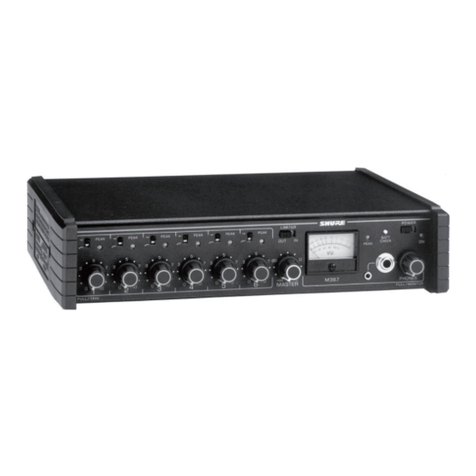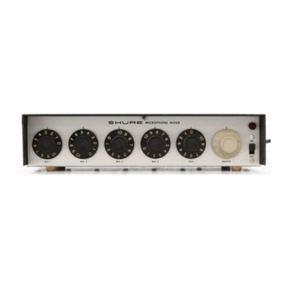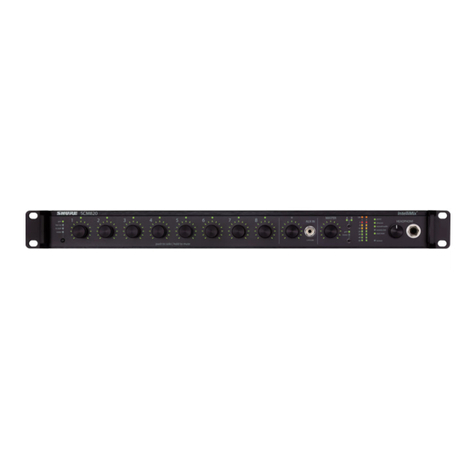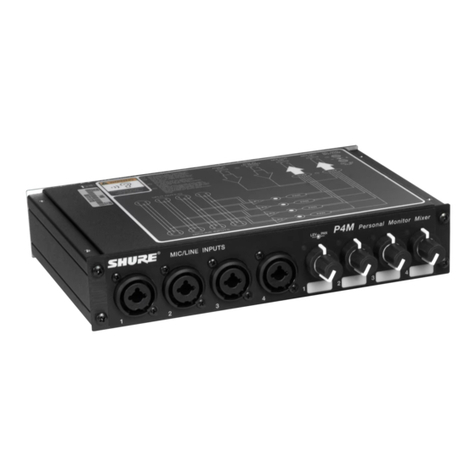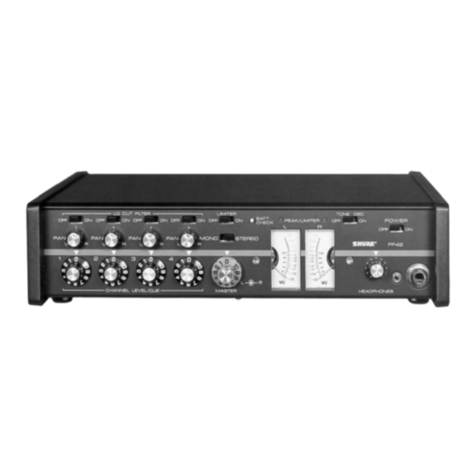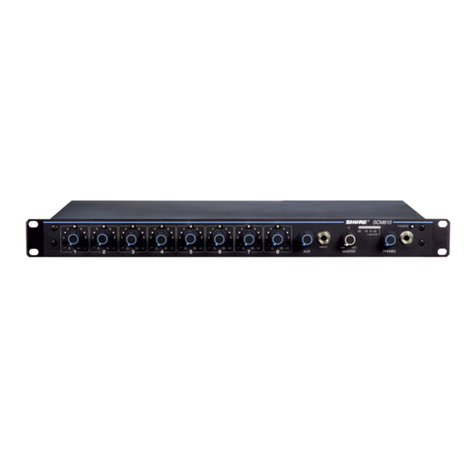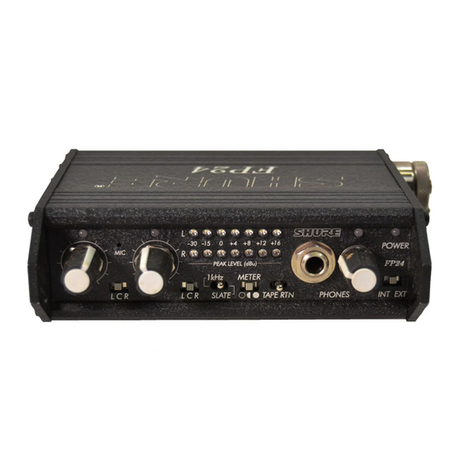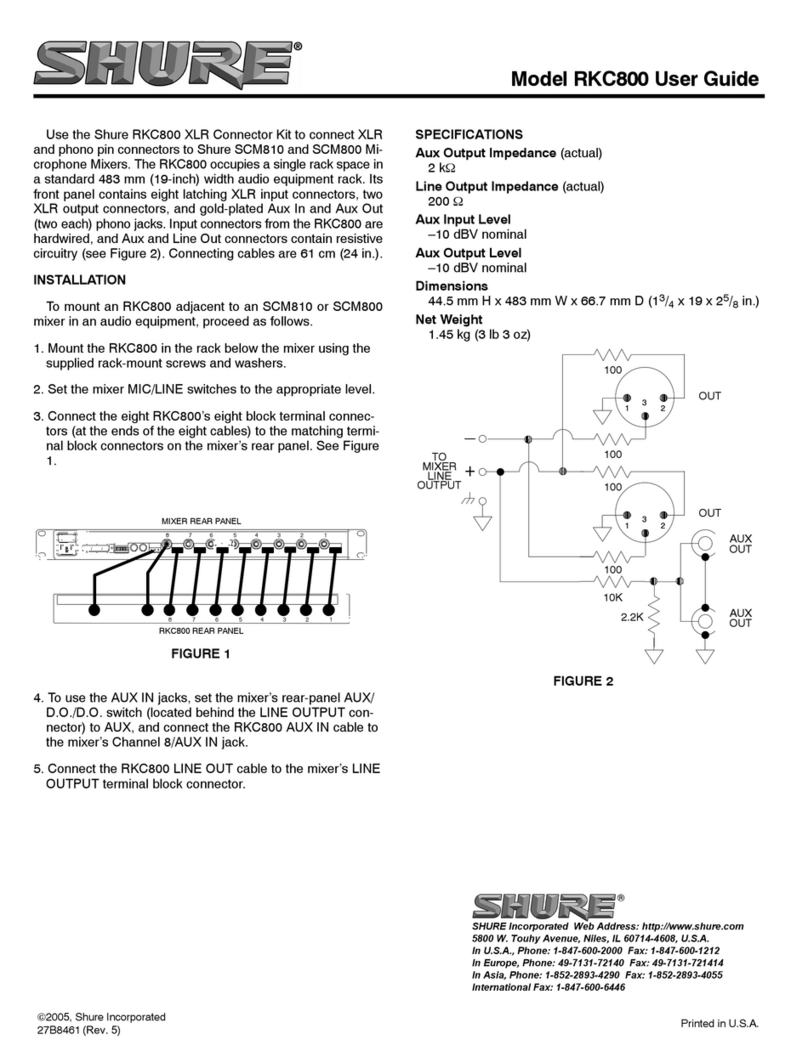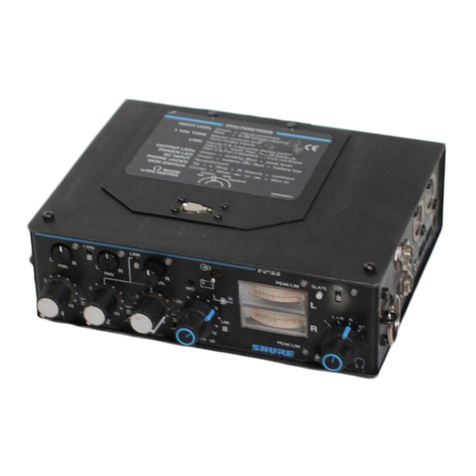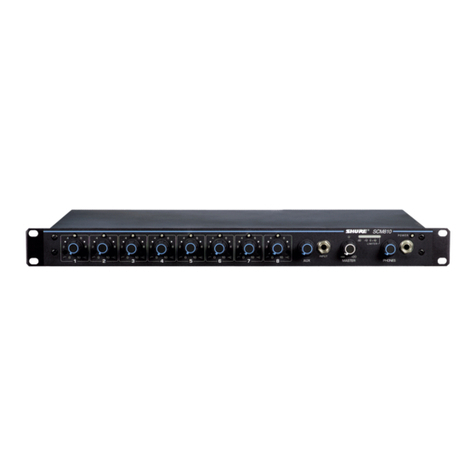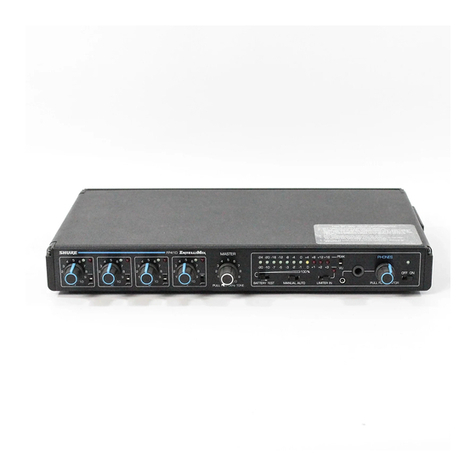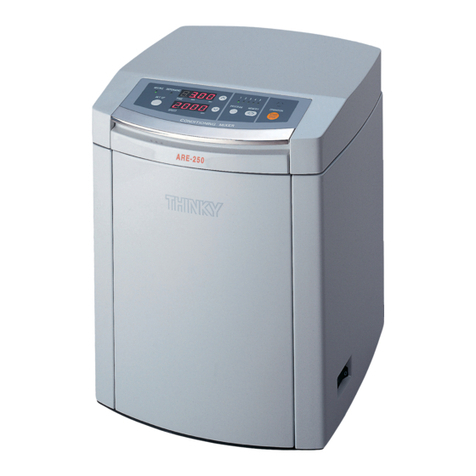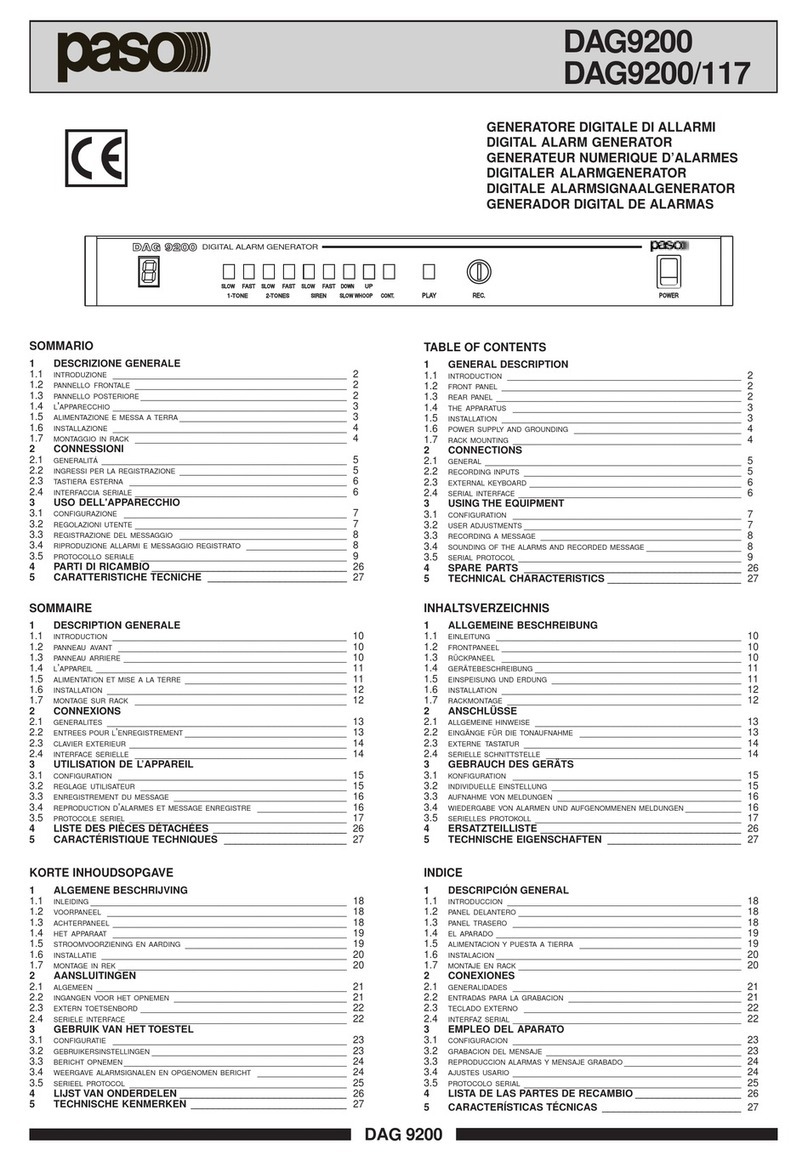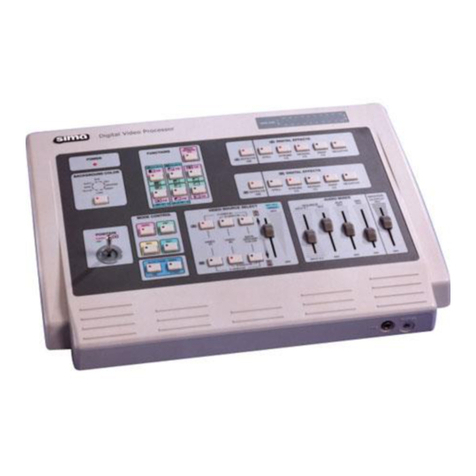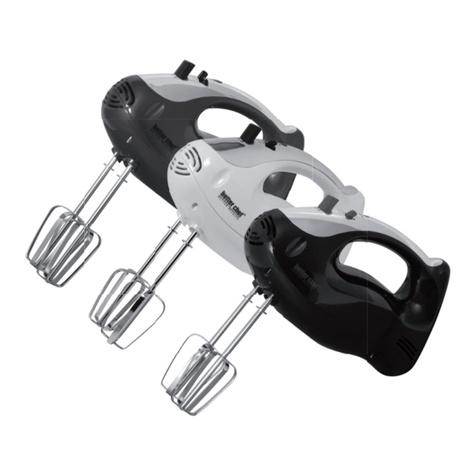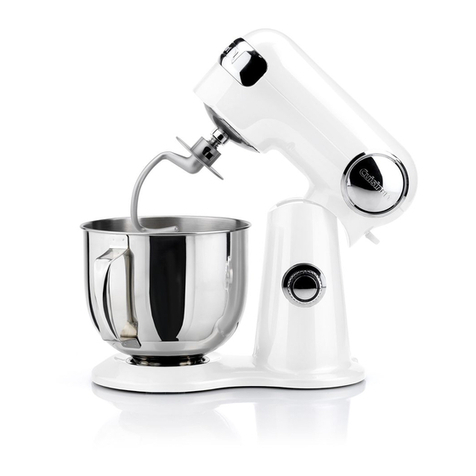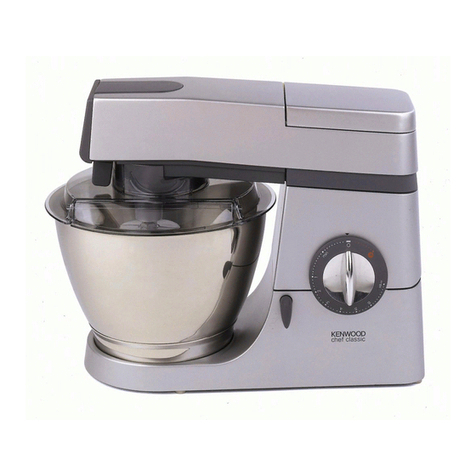
5
English –
INTERNAL MODIFICATIONS
WARNING!
Voltages in this equipment are hazardous to life. No
user-serviceable parts inside. Refer all servicing to
qualified service personnel.
Disassembly
To access the printed circuit board (pc board) for internal
modifications, use the following steps:
1. Unplug the power cord.
2. Remove the knobs and retainer nuts from the front panel
(See Figure 2).
KNOB ASSEMBLY
Figure 2
3. Remove the four screws at each corner of the back panel.
4. Remove the two screws at each bottom corner of the front
panel
5. Slide the back panel and pc board out from the rear of the
chassis.
CAUTION: When reassembling the SCM268, DO NOT OVER-
TIGHTEN the knob retainer nuts. Use a minimal amount of force
tosecurethenut(0.6–0.8N⋅m(5–7in⋅lb)).Damagetotheinternal
components will result if too much force is used.
Low-Cut Filter
To bypass the built-in low-cut filter for a given channel, re-
movethespecifiedresistorandplacea10mFto33mFcapacitorin
thespecifiedpcboardlocation(polaritydoesnotmatter).Referto
the following table:
Channel Remove Resistor
from: Place 10mF to 33mF
Capacitor in:
1 R18 X17
2 R28 X27
3 R38 X37
4 R48 X47
To select a particular corner frequency for the low cut filter,
removetheR18,R28,R38,orR48resistorforagivenchannelas
specified above. Then, in the corresponding pc board location
(X17, X27, X37, or X47), place a capacitor of the specified value
(polarity does not matter). Refer to the following formula for se-
lectingthecorrectcapacitor value forthedesiredcornerfrequen-
cy.
26.5
F
C =
where:
C = value of capacitor in mF
F = corner frequency (–3 bB) for low-cut filter in Hz
The following table lists the low-cut frequency corners for
some of the most common capacitor values:
Capacitor Value (mF) Low-Cut Frequency Corner (Hz)
.033 803
.047 564
.068 390
.1 265
.22 120
.33 80
.47 56
.68 39
1.0 26.5
2.2 12
Phantom Power Disable
To disable phantom power for a given microphone input, re-
move the specified resistor as listed in the following table:
Channel Remove Resistor:
1 R15
2 R25
3 R35
4 R45
Line Pad
To insert a 50 dB line pad for a given microphone input, re-
movethespecifiedresistorandshortthesolderpointsatthespe-
cified pc board locations. Refer to the following table:
Channel Remove Resistors: Short Solder Points:
1R12, R13, R15 X11 and X14
2R22, R23, R25 X21 and X24
3R32, R33, R35 X31 and X34
4R42, R43, R45 X41 and X44
Hot Mic Pad
Some condenser mics have a high output. In order to avoid
overdrivingtheinputstage,theusermayneedtosettheinputpot
lower than desired. To fix this problem, the user can place an 11
dB pad into the input gain stage of a selected channel.
1. Twisttogethertheleadsfromonesideofa15kΩresistorand
a 0.1 µF capacitor: 15 kΩ
0.1 µF
2. Solder the free ends of the resistor-capacitor combination
into the holes at the jumper position indicated by the follow-
ing table and remove the corresponding surface mount re-
sistor.
Channel Remove
Resistor Insert Resistor–Capacitor
Combination at Jumper
1 R18 X17
2 R28 X27
3 R38 X37
4 R48 X47

